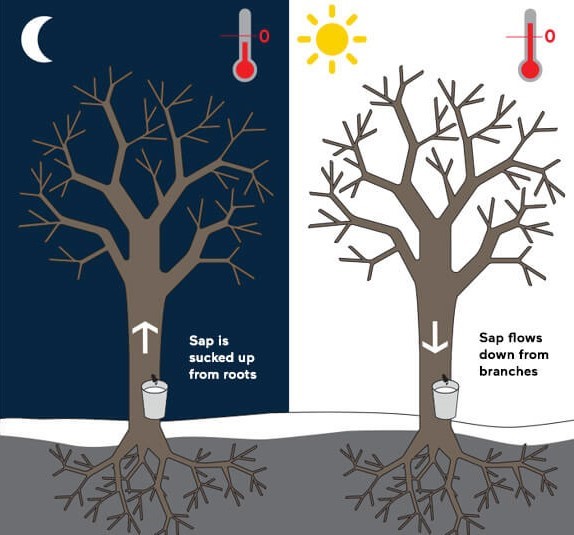The impact of weather on maple syrup making season
Around this time of year, you may see lines of tubing weaving through the woods or buckets hung onto trees, collecting sap to be made into maple syrup - but what is happening inside the trees that allow for that sap to flow? It all comes down to the weather, but more specifically, our temperatures.
In order to get sap flow, you need a balance between above-freezing and below-freezing temperatures. When temperatures drop below 32 degrees, the sap flows up the trunk. This is because the pressure inside the tree is lower than the surrounding air pressure, making the tree act like a vacuum as it sucks in water and nutrients through its roots.
For the sap to flow back down the trunk, temperatures need to rise above freezing again. By tapping a tree, you’re cutting into that upward-downward movement, allowing some of the sap to flow out which can then be made into maple syrup.
“That freezing thawing acts almost like a pumping action within the tree,” commented Courtney Franke, the Miller at Bonneyville Mill County Park in Bristol, who taught a maple syrup making class this past weekend.
So, how have our temperatures this year affected the tree tapping season?
“If you got your taps in early,” said Franke, “like that first week in February, it's not been too bad. It has not been very good lately, just because for a while it was too warm for too long, and we weren't getting those freezing temperatures at night.”
The tapping season typically lasts until around the first week in April, so there’s still time for people to collect sap - we’ll just have to hope that temperatures fall in tappers’ favor.




